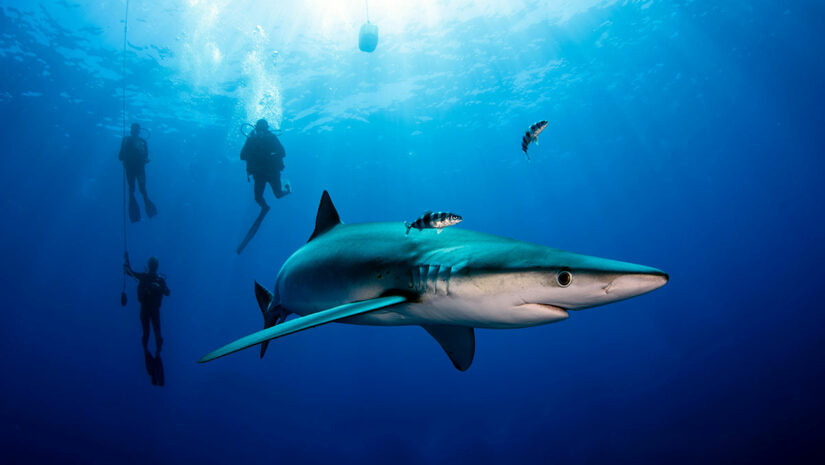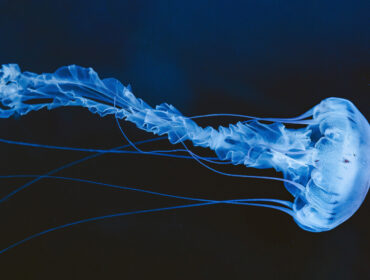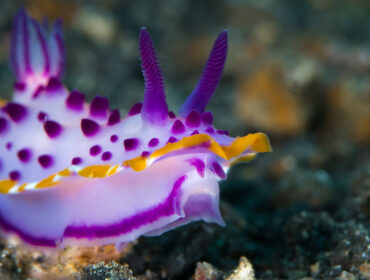Because they are deep swimmers, you may never encounter a blue shark on the average recreational dive, but these beautiful creatures are actually among the most widely distributed of shark breeds. Sadly, they are also the most overfished. Learn more about blue sharks and their most deadly threat with these fun facts.
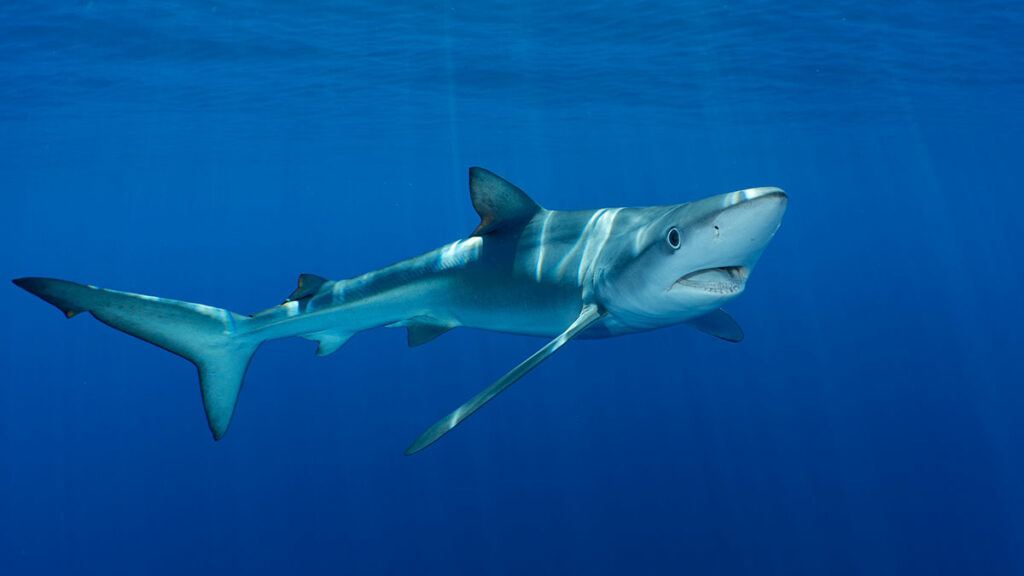
What is a blue shark?
The blue shark (Prionace glauca) is a majestic and highly adaptable marine species. Recognized for its striking blue coloration, this shark is found in oceans worldwide, from tropical to temperate waters. With its sleek body and long, slender tail, the blue shark is built for speed and agility. It is a true oceanic predator, feeding on a variety of marine organisms, including fish, squid, and even other sharks. Known for its curiosity, the blue shark often investigates floating objects and boats. Despite its intimidating appearance, the blue shark is generally not aggressive towards humans, making it a captivating and enigmatic creature of the deep.
Why are they called blue sharks?
They are so named because of the deep indigo coloring on their backs and vibrant blue shades on the sides of their bodies.
Habitat
A migratory breed, blue sharks are found all over the world, except the polar circle. They prefer deeper, colder waters of about 1,300 feet and 50-68F.
Socially, blue sharks school together, but they segregate their groups based on gender and size. Males and females school separately, and each group has their own pecking order of dominant and submissive members.
Body composition
Blue sharks have a slim, torpedo shaped body and are graceful swimmers. They reach up to 13 feet in length and can weigh up to 450 pounds.
Diet
They hunt by detecting electromagnetic pulses, as do all sharks, and can sense a heart beating from miles away. Their favorite food is squid but they also eat shrimp, lobster, sea birds, and smaller sharks.
Life span & mating
Females of the breed are necessarily thick skinned. This is because male sharks tend to bite during mating, in what can be quite a violent process. Baby blues are born live and one litter can contain from 20 to 100 pups!
Predators
They have no natural predators, other than man, yet upwards of 10 million are killed each year by commercial fishing operations. Blue sharks do not do well in captivity, surviving for an average of no longer than six months. They are currently listed as “near threatened” on the IUCN Redlist.
Blue sharks are generally not aggressive to humans but will attack if threatened.
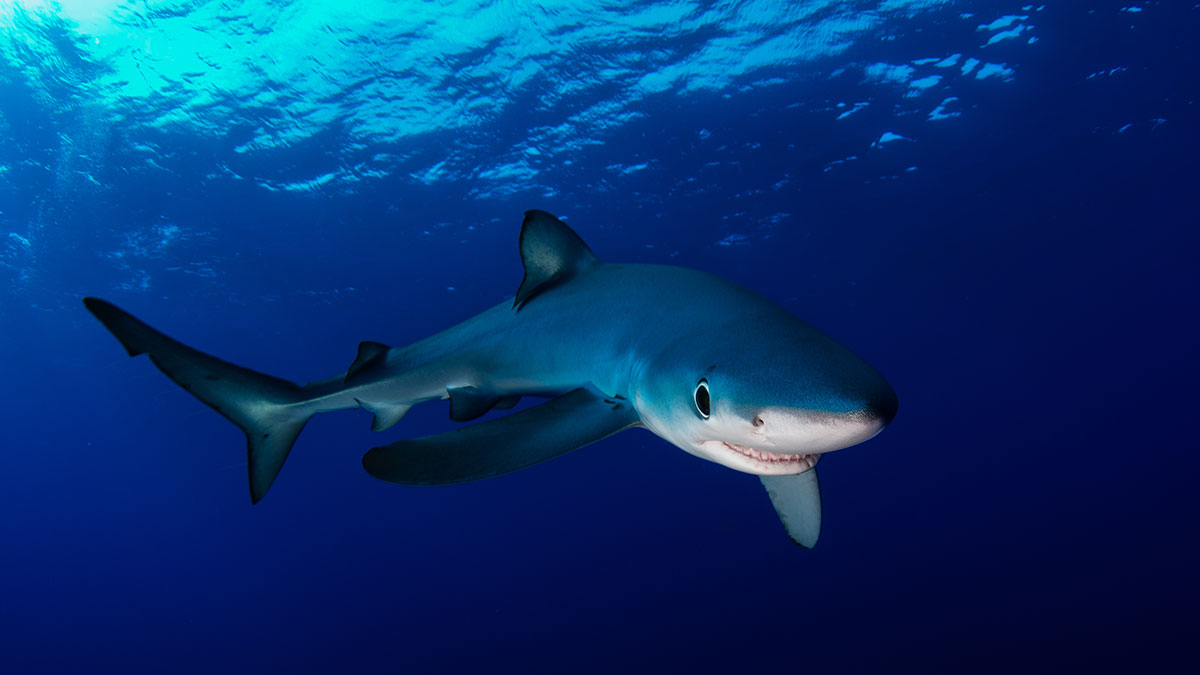
Blue Sharks: Frequently Asked Questions
No, a blue shark is not the same as a mako shark. While both are species of sharks, they belong to different genera. The blue shark (Prionace glauca) is known for its blue coloration and is found in various oceanic regions. In contrast, the mako shark (Isurus spp.) is known for its incredible speed and streamlined body, typically appearing in warmer waters.
Blue sharks are considered relatively common and can be found in oceans worldwide. They are widespread in both coastal and pelagic waters, inhabiting a variety of habitats. Due to their broad distribution and adaptability, blue sharks are frequently encountered by fishermen, researchers, and divers in many parts of the world.
Swimming with blue sharks is possible but should be approached with caution. While blue sharks are generally not aggressive towards humans, they are wild predators and can display unpredictable behavior. It is essential to follow proper safety protocols, be accompanied by experts, and respect the shark’s space to ensure a safe and responsible interaction.
Conclusion
Blue sharks continue to captivate us with their stunning appearance, remarkable adaptability, and widespread presence in the oceans. These sleek predators exemplify the beauty and diversity of marine life. While much remains to be discovered about their behavior and ecology, one thing is certain: the blue shark holds a special place in the fascinating realm of oceanic wonders.

